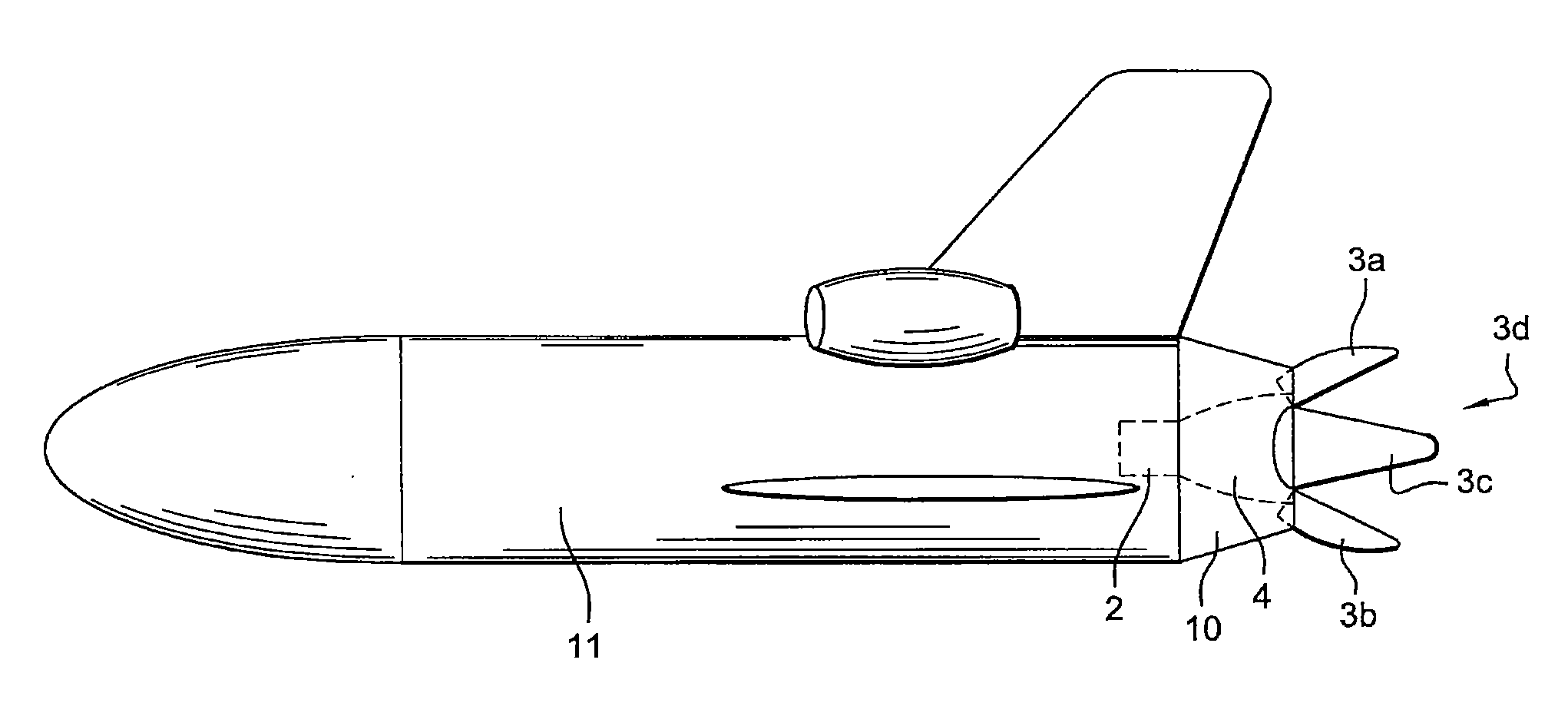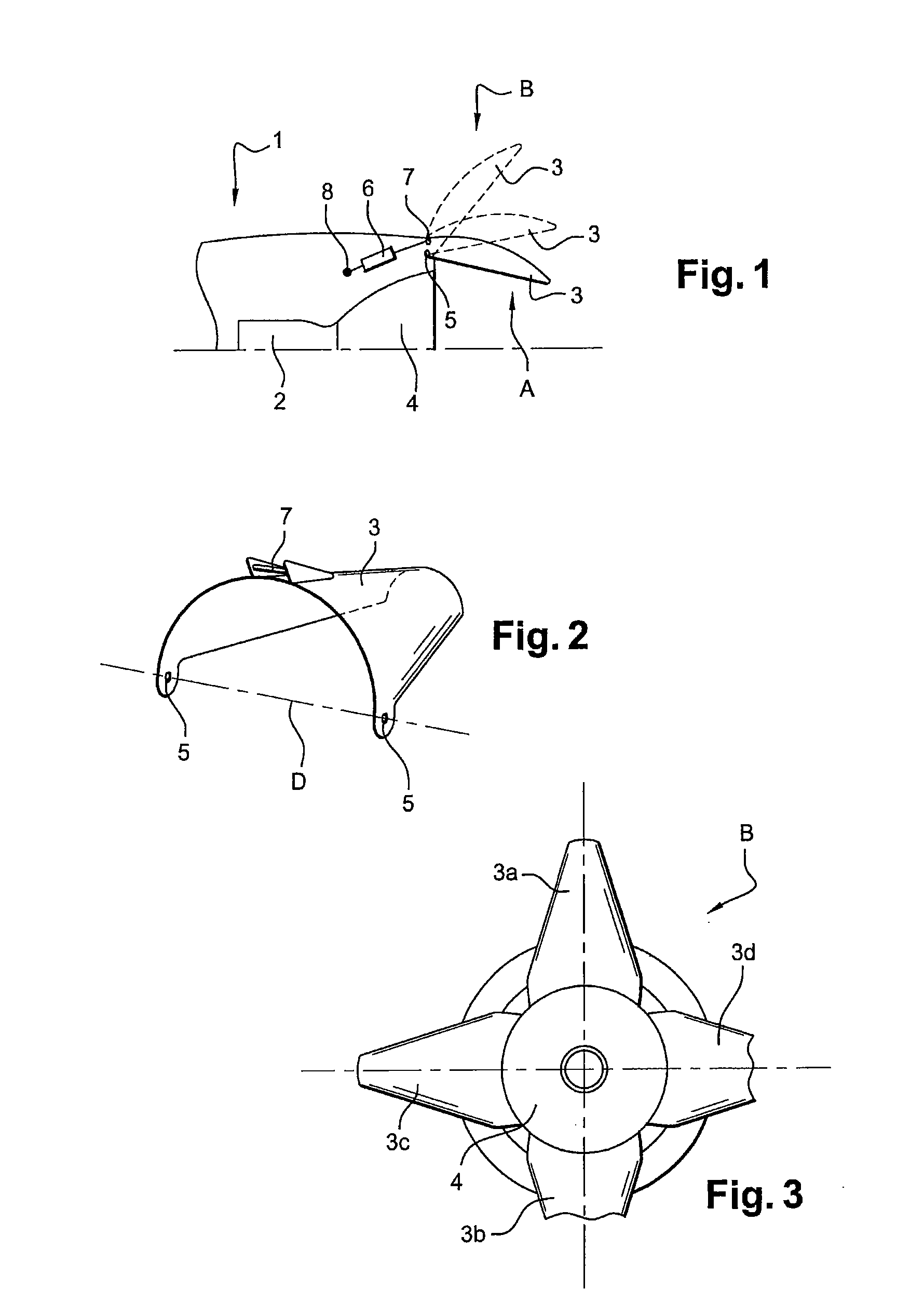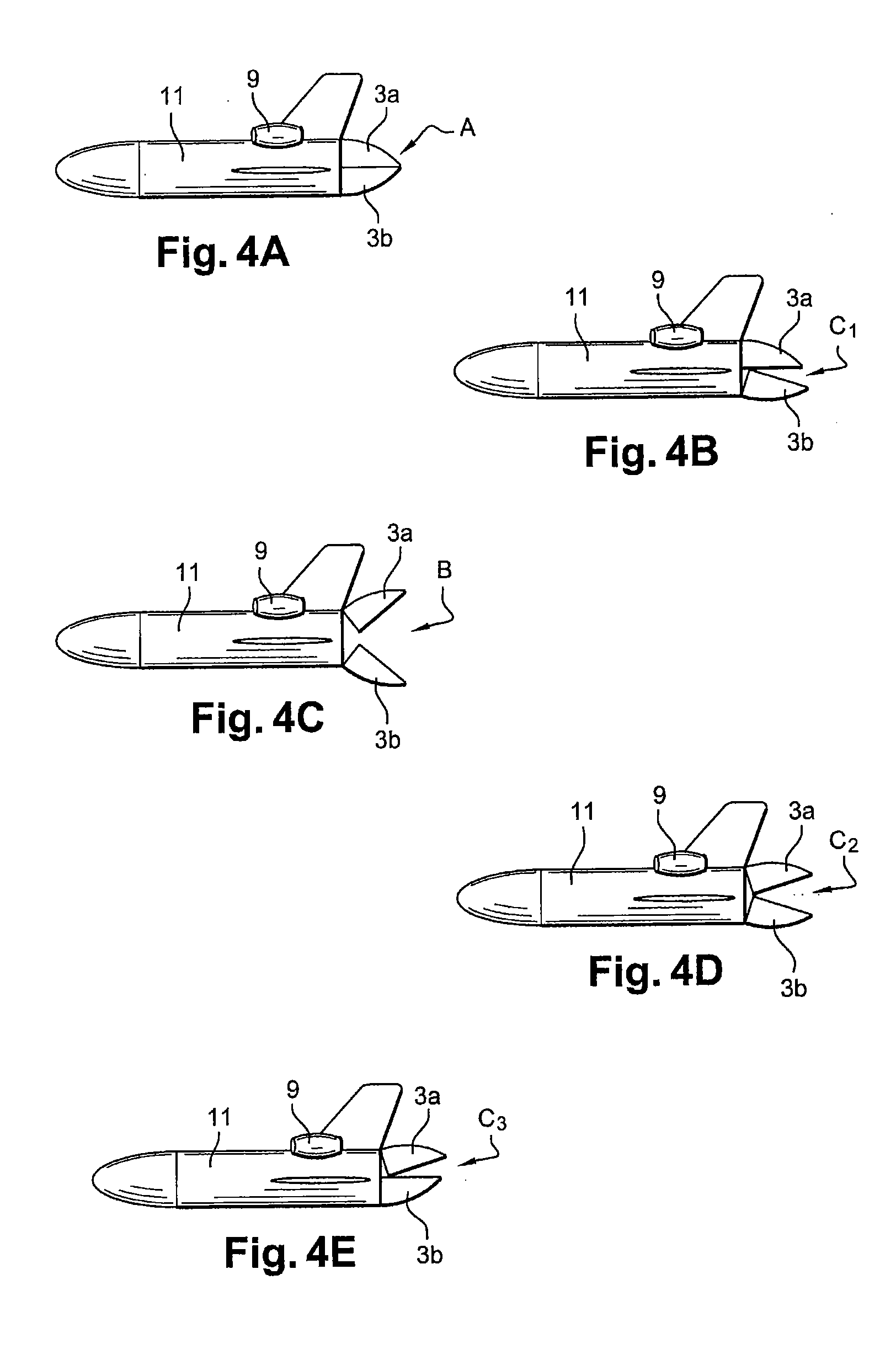Spacecraft afterbody device
- Summary
- Abstract
- Description
- Claims
- Application Information
AI Technical Summary
Benefits of technology
Problems solved by technology
Method used
Image
Examples
Embodiment Construction
[0034]The invention applies in particular to a spacecraft whose rocket engine is not used during atmospheric flight phases and creates significant aerodynamic drag, braking the vehicle and requiring an increase in the thrust necessary during take-off to the ascent of the vehicle in the atmosphere.
[0035]The invention applies in particular to a vehicle such as a space shuttle in which the take-off and the atmospheric flight phase, or most of this phase, are performed with propulsion means other that the vehicle's rocket engine.
[0036]It applies for instance to a spacecraft that will be taken to a launch altitude by a carrier airplane, to a spacecraft propelled by jettisonable boosters for its take-off and atmospheric ascent, to a spacecraft such as a space-plane type of suborbital vehicle in which the first part of the trajectory is performed with an aeronautical type of propulsion using engines operating with oxygen from the air and foils, before switching to a rocket type of propulsi...
PUM
 Login to View More
Login to View More Abstract
Description
Claims
Application Information
 Login to View More
Login to View More - R&D
- Intellectual Property
- Life Sciences
- Materials
- Tech Scout
- Unparalleled Data Quality
- Higher Quality Content
- 60% Fewer Hallucinations
Browse by: Latest US Patents, China's latest patents, Technical Efficacy Thesaurus, Application Domain, Technology Topic, Popular Technical Reports.
© 2025 PatSnap. All rights reserved.Legal|Privacy policy|Modern Slavery Act Transparency Statement|Sitemap|About US| Contact US: help@patsnap.com



